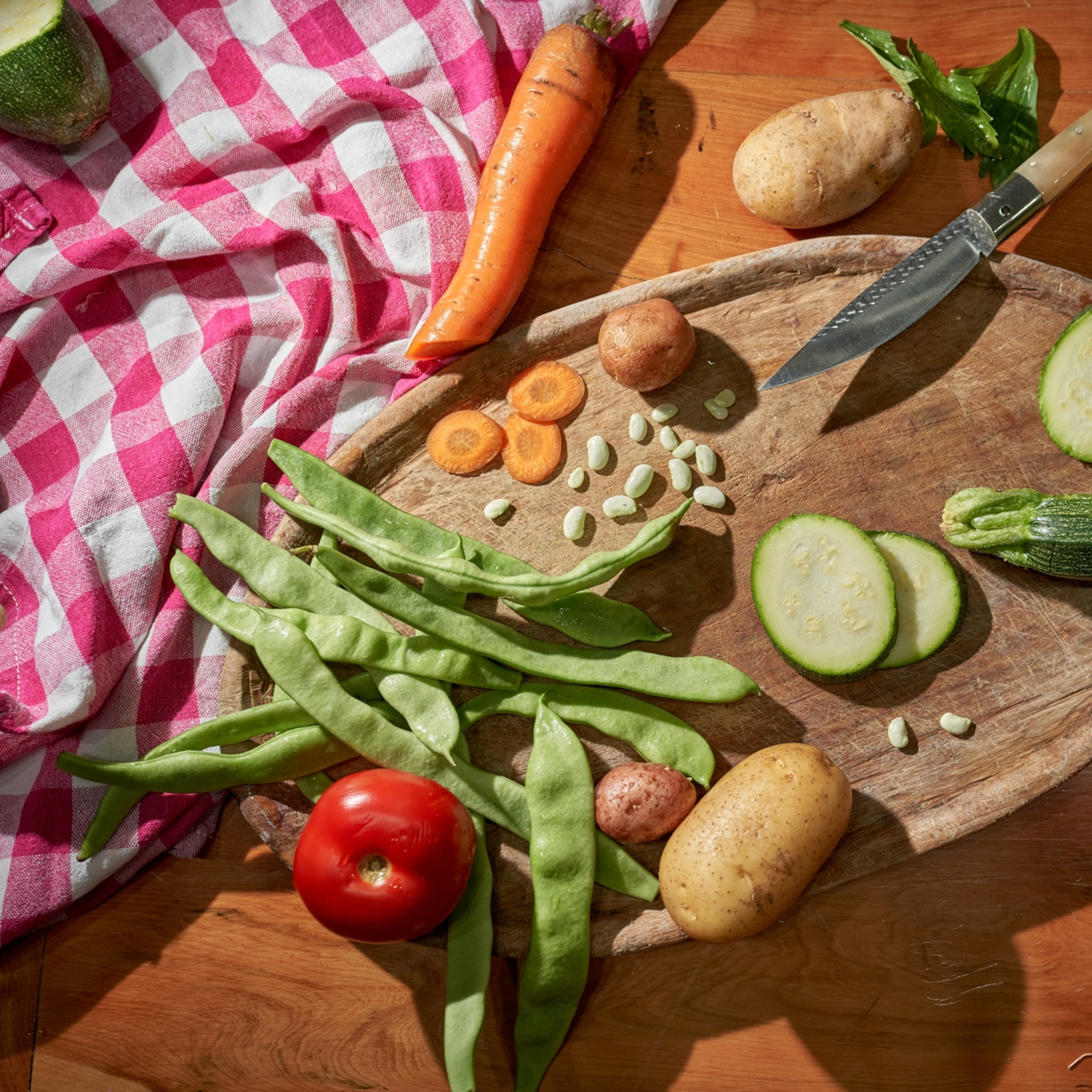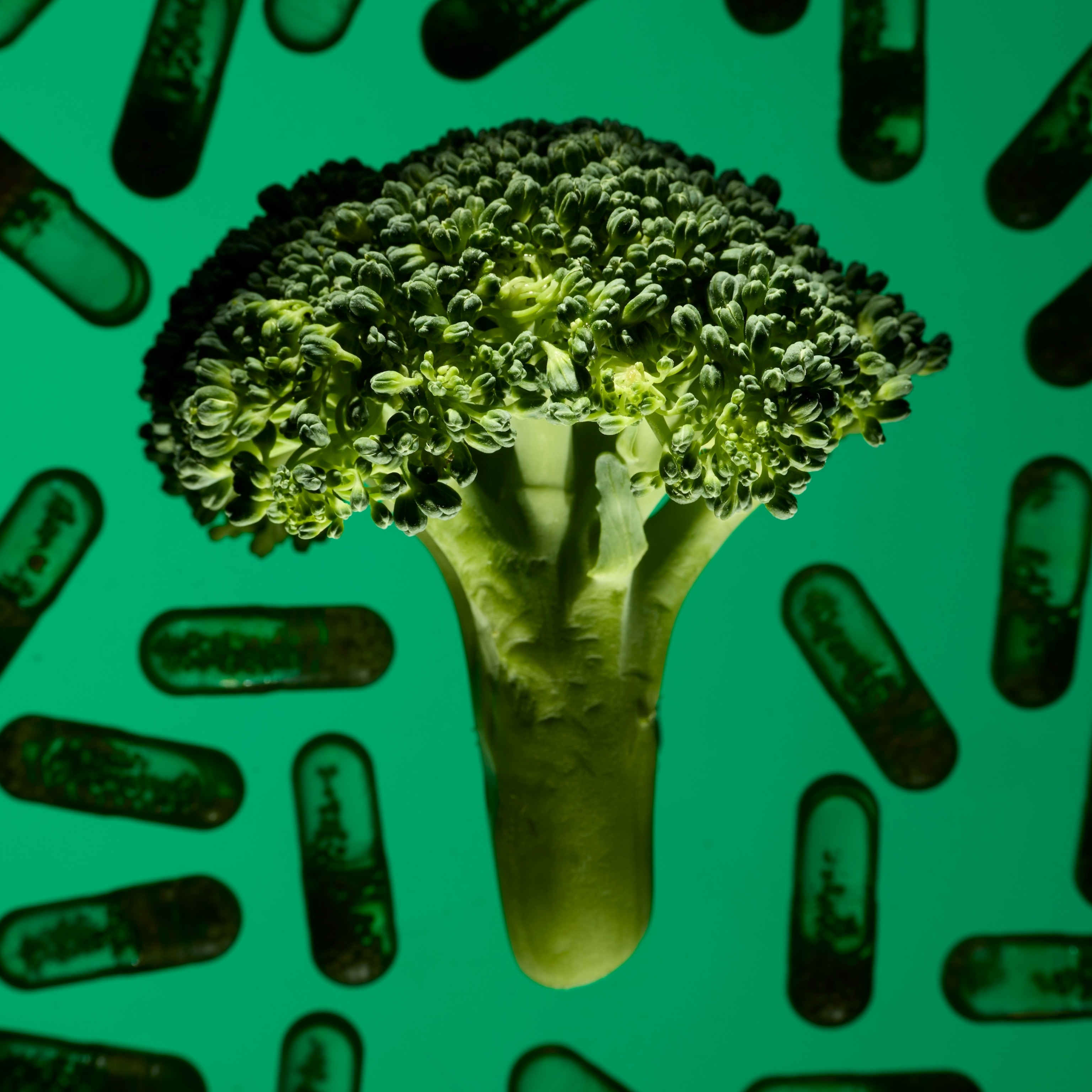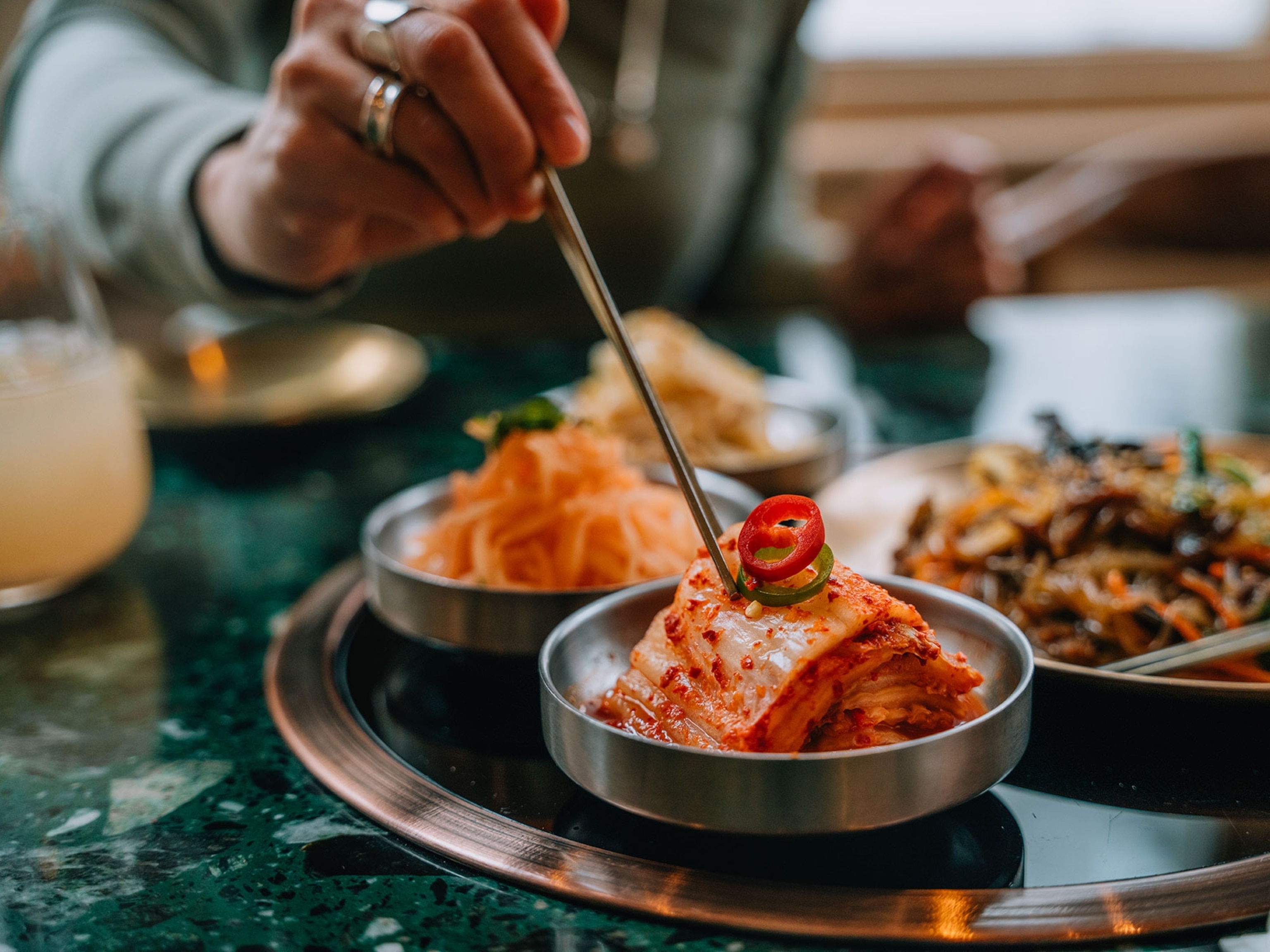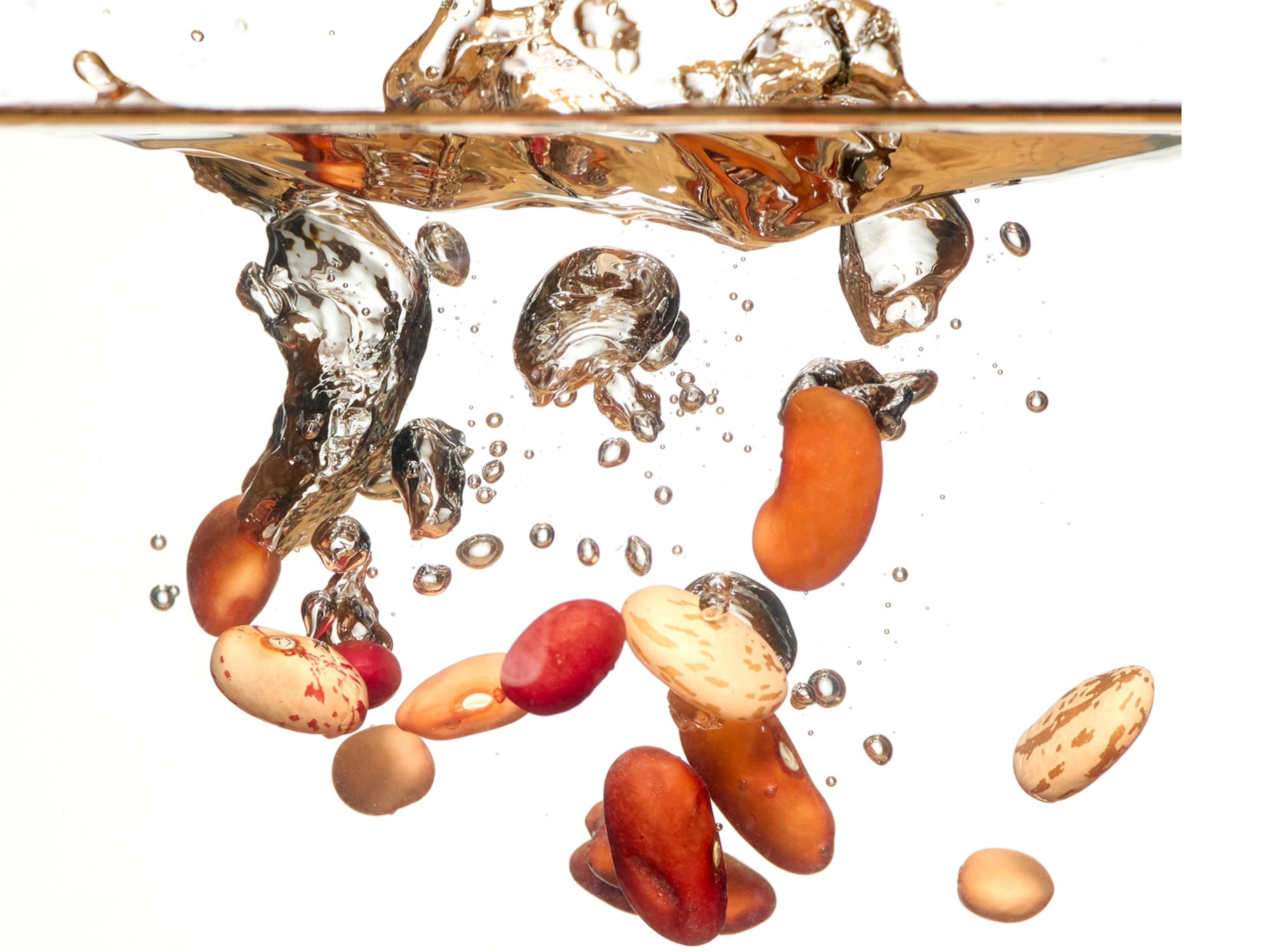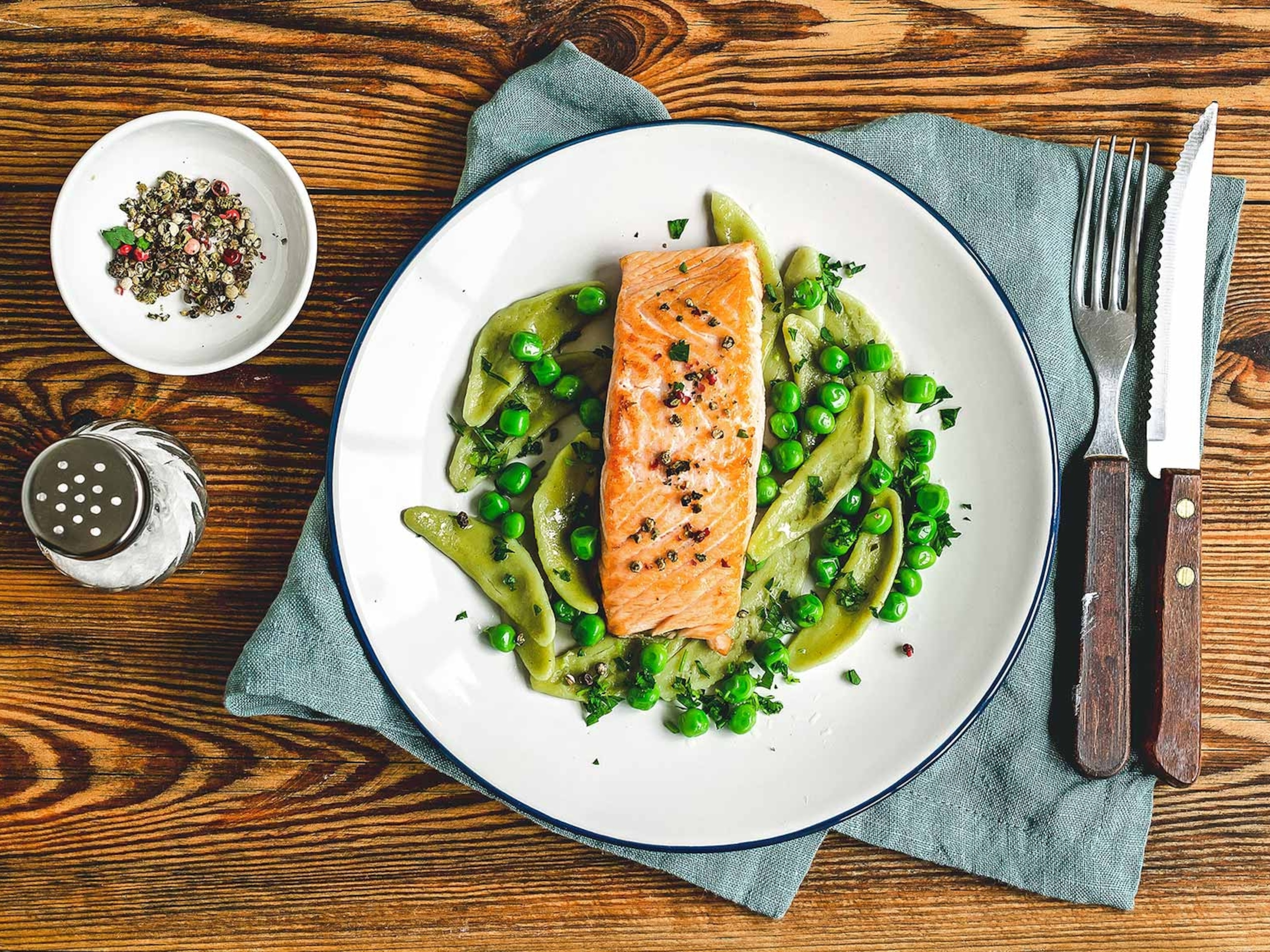
When Feeding the Troops, Flavor is Rarely on the Menu
Traditionally, cooks don’t flock to recipes for military chow; and members of the military don’t usually expect to enjoy their meals. But there is at least one exception: The Swiss Guards in Vatican City.
The best-fed army in the world may just possibly be the tiniest. The Swiss Guards, all 110 of them, are famous for their magnificent dress uniform—a Renaissance-style outfit with stockings and bloomers striped in red, gold, and blue. Apparently, they are also known for their splendid table.
A favorite of the Guards is eggplant parmesan, though on any given day, they may also be treated to fresh-cooked risotto, tortellini, Florentine tomato soup, or sausages and sauerkraut. David Geisser, a soldier in the Guards and a professional chef, has recently published Buon Appetito, a cookbook of the favorite recipes of his compatriots at the Vatican—and its very existence must be a landmark in the history of military cooking.
The generally awful reputation of military food dates to ancient times. Enlisted men of ancient Egypt, whose army numbered in the tens of thousands, complained of “meager and unpleasant” rations. Spartan soldiers subsisted on black broth; a mix of boiled pigs’ legs, blood, and vinegar, a brew supposedly so off-putting that it contributed to the Spartans’ legendary willingness to die.
The Roman legions—luckier than most—were fed a high-calorie diet of bread, bacon, cheese, and wine, supplemented with whatever they could catch, kill, collect, or buy from the civilian population, though many Roman soldiers also depended in part on care packages sent from home.
Medieval soldiers were expected to supply their own food and drink as best they could, though some victuals were periodically distributed by the Crown—principally bread, pottage, salt fish, and beer (if you were British) or wine.
Napoleon—who reputedly stated that “An army marches on its stomach”—hypocritically provisioned his troops with nothing much, expecting French soldiers to fend for themselves, purchasing (or stealing) supplies from local merchants and farmers. This policy failed abysmally in the ill-fated 1812 march on Moscow, when Napoleon’s Grand Army was faced with a brutal winter and a Russian scorched-earth policy. Of 600,000 soldiers, only 25.000 survived. The rest were downed by cold, disease, and starvation.
How and what to feed soldiers—particularly soldiers on the move—is a problem of long standing. For most of history, soldiers foraged for their meals—that is, they nabbed whatever they could from the surrounding environment or stole from the neighboring populace. The children’s story Stone Soup is essentially a foraging tale: hungry soldiers, marching home from war, arrive in a village where the people—obviously the victims of previous unpleasant military visits—have hidden all their food. However, the clever soldiers, by pretending to make a delicious soup from nothing but water and a stone, convince the villagers to share their hidden stores, and all ends happily with a feast.
In reality, foraging was seldom adequate and rarely ended in feasts. Since hungry and undernourished soldiers manifestly weren’t fit for combat, military commanders began to demand reliable government-issued rations.
In America, the first formal military food program was put in place in 1775. During the Revolutionary War, each enlisted man, by order of the Continental Congress, was entitled to a ration of one pound of beef or salt fish, one pound of bread or flour, and a pint of milk each day, and three pints of peas or beans per week. Later, to combat scurvy, Congress added a daily quart of cider or spruce beer, plus allotments of sauerkraut or fresh vegetables. Revolutionary soldiers also, at least in theory, got a daily four ounces of rum.
By the Civil War, coffee had displaced rum. John Billings, in Hard Tack and Coffee, his memoir of life in the Army of the Potomac, originally published in 1887, recalls Civil-War rations: “They were salt pork, fresh beef, salt beef, rarely ham or bacon, hard bread, soft bread, potatoes, an occasional onion, flour, beans, split pease, rice, dried apples, dried peaches, desiccated vegetables, coffee, tea, sugar, molasses, vinegar, candles, soap, pepper, and salt.” “It is scarcely necessary to state,” Billings adds, “that these were not all served out at one time.” Confederate soldiers fared worse, since food was scarcer in the South: their staples were cornmeal and peanuts.
The biggest threat to life in World War I, joked the soldiers in the trenches, was not German bullets, but the appalling rations. Worst of the worst was Maconochie, named for the Scottish company that manufactured it from—according to the label on the cans—the “finest beef,” potatoes, haricot beans, carrots, and onions. Eaters, who claimed it was mostly turnips, described it as “an inferior grade of garbage” and called it “a man-killer.”
World War II generated an entire alphabet soup of rations, of which the most desirable—A-rations—consisted of fresh food prepared in dining halls or field kitchens. Soldiers in action, however, generally got individual kits of C-rations, the military equivalent of a box lunch. Each typically included crackers, coffee, a chocolate bar, and a can of spaghetti, stew, or franks and beans – plus such extras as cigarettes, chewing gum, matches, and a postage-stamp-sized packet of toilet paper. Descriptions of the meals ranged from “not bad” to “downright awful,” in spite of the military’s attempt to perk them up by shipping in Tabasco sauce.
Today the latest in military field meals is the MRE (Meals, Ready to Eat), technically slick packets, each of which includes a water-activated chemical heater, a main course (two dozen varieties, among them turkey chili, penne with sausage, beef brisket, and vegetable lasagna), crackers and peanut butter, a fruit bar, a slice of pound cake, and a powdered beverage mix.
Though not met with universal enthusiasm, they’re a definite improvement over the past. Check out National Geographic‘s slideshow of modern MREs here. They’ve also been a godsend in disaster situations: 21 million MREs, for example, were sent to New Orleans in the wake of Hurricane Katrina.
The bright side of military meals is the positive impact they’ve had—if not on our taste buds, on our knowledge of human nutrition. One of the first to tackle this problem was the formidable Florence Nightingale, whose
Directions for Cooking by Troops in Camps and Hospitals
, published in 1861, included—along with recipes such as “Salt Pork with Mashed Beans for One Hundred Men”—some helpful nutritional pointers. (Miss Nightingale, for example, advocated fresh milk, but disparaged beef tea.)Twentieth-century studies aimed at assessing the nutritional needs of military personnel led to the establishment of the Recommended Dietary Allowances that now figure on the labels of every package and container of commercial food. Military nutrition surveys laid the groundwork for national nutrition research, the results of which led to a wealth of hunger-combating social programs, among them the Supplemental Nutritional Assistance Program (SNAP) and the School Breakfast Program. Today all Americans—including the 46 million of us on food stamps—are able to eat better because, decades ago, the military worried about the quality and quantity of soldiers’ food.
Taste-wise, it sounds like they’ve still got a ways to go.
But you can bet that the average MRE is a whole lot better than Maconochie or black broth.

